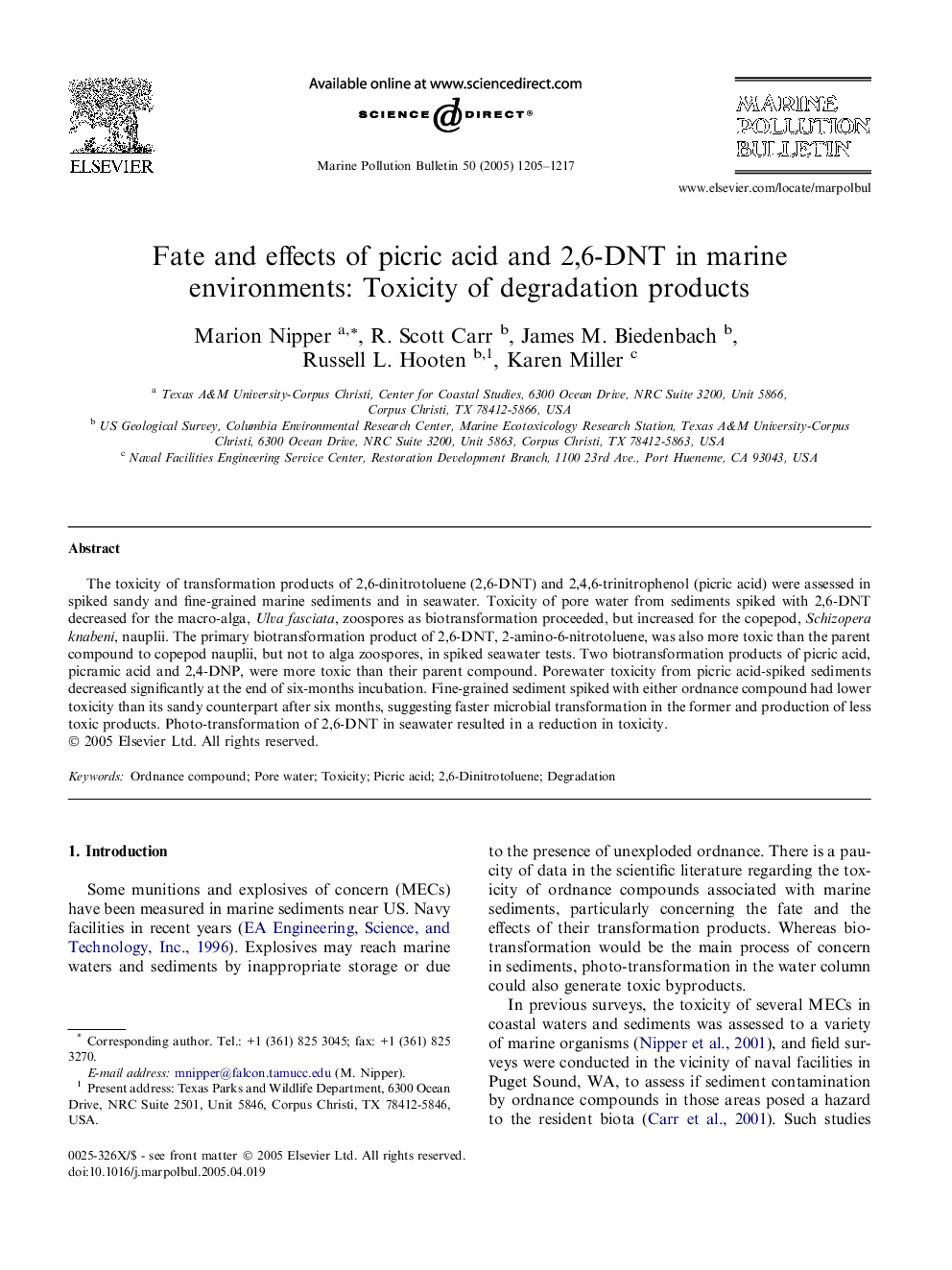| Article ID | Journal | Published Year | Pages | File Type |
|---|---|---|---|---|
| 9465991 | Marine Pollution Bulletin | 2005 | 13 Pages |
Abstract
The toxicity of transformation products of 2,6-dinitrotoluene (2,6-DNT) and 2,4,6-trinitrophenol (picric acid) were assessed in spiked sandy and fine-grained marine sediments and in seawater. Toxicity of pore water from sediments spiked with 2,6-DNT decreased for the macro-alga, Ulva fasciata, zoospores as biotransformation proceeded, but increased for the copepod, Schizopera knabeni, nauplii. The primary biotransformation product of 2,6-DNT, 2-amino-6-nitrotoluene, was also more toxic than the parent compound to copepod nauplii, but not to alga zoospores, in spiked seawater tests. Two biotransformation products of picric acid, picramic acid and 2,4-DNP, were more toxic than their parent compound. Porewater toxicity from picric acid-spiked sediments decreased significantly at the end of six-months incubation. Fine-grained sediment spiked with either ordnance compound had lower toxicity than its sandy counterpart after six months, suggesting faster microbial transformation in the former and production of less toxic products. Photo-transformation of 2,6-DNT in seawater resulted in a reduction in toxicity.
Related Topics
Physical Sciences and Engineering
Earth and Planetary Sciences
Oceanography
Authors
Marion Nipper, R. Scott Carr, James M. Biedenbach, Russell L. Hooten, Karen Miller,
